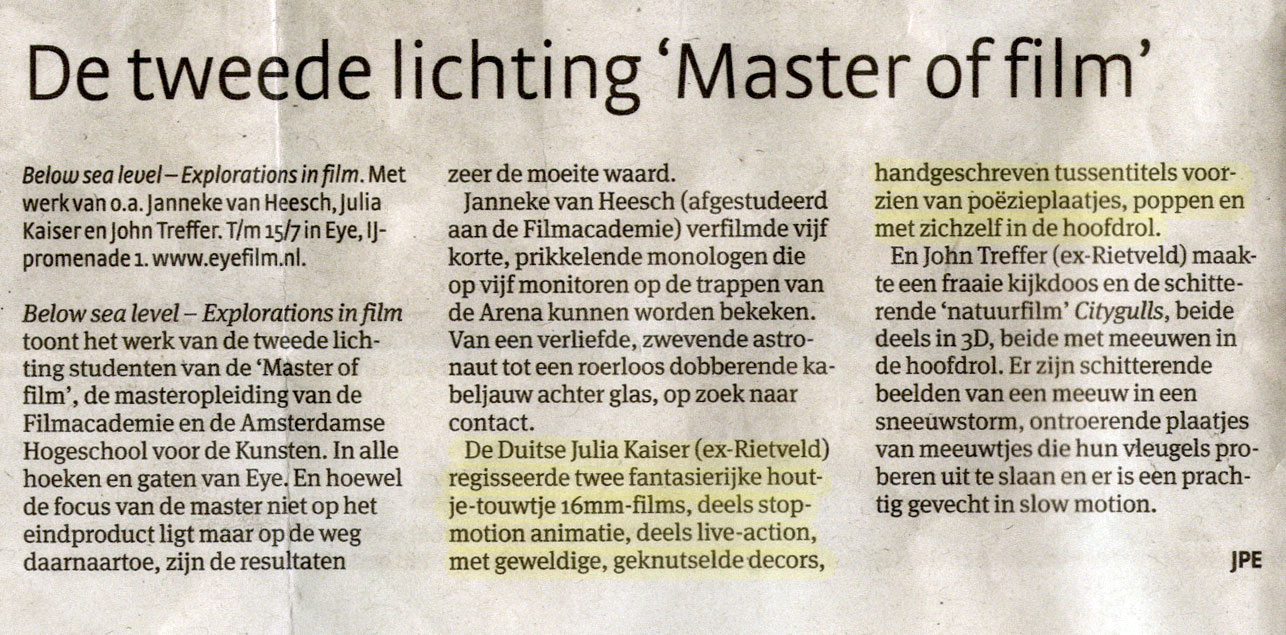"Just like many other film-makers are exploring the possibilities (and impossibilities) of combining fiction and documentary in the same piece of work, Julia Kaiser is intrigued by the possibility of symbiosis, but a symbiosis of a different kind: one whereby actors made of textile and wire compete on an equal footong with actors made of flesh and blood. These are neither standard animations nor cuddly and appealing ventriloquist's dummies, but dolls who are dolls in the way that people are people. In fact the dolls are authentic because they don't want to be real; dolls that do not belong to the domain of human fantasy but have both feet firmly planted in their reality.
After a thorough preliminary study (comprising more than is described above), Julia Kaiser enlisted herself in the 16mm film Farewell to Han, portraying a daughter who relies on slovenliness and beer to escape the shackles imposed by her mother, a frog who has been snatched from the gates of oblivion. The brazenly explicit POVs of Han wandering around a castle inhabited by dolls manage to evoke the reality that she longs for; it is anything but virtual. The film is an eccentric melodrama that does not shy away from banalities or well-considered clumsiness - a film that despite, or perhaps on account of, its alienating nature, still manages to convince us with a harrowing compassion. It is as if Kokoschka and his life-size doll Alma have walked onto the film set of Imitation of Life."
Suzanne Wallinga, curator of Below Sea Level, Explorations in Film, 07/2012
"Julia Kaiser's short, near-absurd films make a powerful appeal to the imagination, bringing different worlds together - in particular, the worlds of dolls and people. The dolls in her films show human traits and behaviour. Kaiser appears to be subverting the conventions of film and exploiting them in in a thoroughly original way. The "signals" that would normally guide the audience through the story instead raise new questions, demanding the use of imagination rather than reason. The cinematic idiom she has developed for this purpose relies on a carnivalesque, folkloric style, in which the rich visual characteristics of the dolls - which are generally found objects - work together with elements like hand-painted scenery and surrealistic lighting. Kaiser proves herself a master creator of hybrid worlds where animation and fiction meet, and does not shy away from melodrama, perversion, and failure."
Jan Pieter Ekker, Het Parool 07/2012

